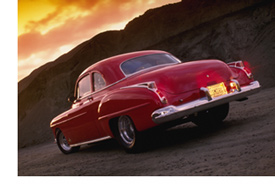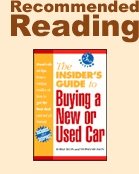Save Gas, Save Money:
How to Reduce Frequent Fill-ups
 Do you love your car, truck, or SUV but hate pulling into the station because it costs so much to fill up the tank? If so, you’re not alone. With fuel prices climbing ever higher, many drivers are suffering major financial collisions. However, while the price of petroleum is out of your control, some of the costs associated with your vehicle are not. You can save a lot of money by making a few changes to the way you drive and use gas.
Do you love your car, truck, or SUV but hate pulling into the station because it costs so much to fill up the tank? If so, you’re not alone. With fuel prices climbing ever higher, many drivers are suffering major financial collisions. However, while the price of petroleum is out of your control, some of the costs associated with your vehicle are not. You can save a lot of money by making a few changes to the way you drive and use gas.
Consider downsizing
Nothing will save you more cash at the station than a fuel-efficient vehicle. Large, heavy trucks and SUVs can burn up to three times as much fuel as small car – and when gas prices rise, your wallet will groan with every extra pound of steel. If it’s time for a trade-in, seriously consider purchasing a vehicle that was built to get good gas mileage.
If you are truly ready to reduce fuel consumption, go for a hybrid car. Since they run on a combination of gasoline and electricity, they are economically (and ecologically) sound.
Maintain your vehicle
Preemptive maintenance not only makes for a safer, more secure ride, but keeping all your vehicle’s parts in tiptop shape will extend fuel usage. Even simple and inexpensive adjustments will make a significant difference over time. Keep your air filter clean, tires filled with the right amount of air, the clutch adjusted, and make sure your engine is filled with the right amount of clean oil.
Think the most expensive gasoline will make your vehicle run better? Make sure you need it before filling the tank with pricy premium. Most cars, trucks, and SUVs are built for regular unleaded – so don’t upgrade to the richer stuff unless you really should.
Drive smart
Before putting the key in the ignition, look around for unnecessary, heavy objects you may be carrying both on the exterior and interior of the vehicle. Believe it or not, carting around such items as a tool kit, stereo equipment, and ski or bike racks affects gas mileage. (Imagine the calories you’d burn if you carried a bag of golf clubs all day!) If you don’t need to have immediate access to the items, store them elsewhere.
Chart your course carefully before hitting the road. Choose the route with the flattest terrain and fewest stops, and if at all possible, avoid traffic jams and stop and go driving. Have a navigation system? Use it to find the quickest path and to avoid wasting gas by getting lost.
While no one likes to swelter in a hot vehicle, before you turn on the air conditioner, take a moment to imagine the money in your wallet evaporating. That blast of cool air translates to a much quicker visit to the pump. Instead, consider rolling the windows down while driving at low to moderate speeds. (The faster you go, the greater the drag – so keep them up when traveling at high speeds.)
Other ways to drive money-smart include (when safe and appropriate):
- Turn the car off rather than idling
- Traveling the right speed for your gear
- Not revving your engine
- Use cruise control on the open road
- Coast down hills
- Accelerate slowly when leaving the stop light
- Not warming up newer vehicles (most don’t need it)
Drive less
Remember – you are not married to your vehicle and you don’t have to spend every moment with it. Driving to the mailbox may be (okay, probably should be) a thing of the past. Reduce unnecessary trips by combining errands, and bike, walk, or use public transportation whenever possible.
If you have neighbors who work in the same general direction as your place of employment, arrange for car pools to share the cost of gas. After all, you are not the only one who is affected by the rising price of fuel – chances are there are many people you know who would be happy to make this arrangement.
Gas is simply too expensive to waste these days. By adopting sensible, cost-cutting measures you can reduce the amount of times you pull in to the station – so you can keep more money in your wallet and continue to love your four-wheeled friend.

 Do you love your car, truck, or SUV but hate pulling into the station because it costs so much to fill up the tank? If so, you’re not alone. With fuel prices climbing ever higher, many drivers are suffering major financial collisions. However, while the price of petroleum is out of your control, some of the costs associated with your vehicle are not. You can save a lot of money by making a few changes to the way you drive and use gas.
Do you love your car, truck, or SUV but hate pulling into the station because it costs so much to fill up the tank? If so, you’re not alone. With fuel prices climbing ever higher, many drivers are suffering major financial collisions. However, while the price of petroleum is out of your control, some of the costs associated with your vehicle are not. You can save a lot of money by making a few changes to the way you drive and use gas.  The Insider's Guide to Buying a New or Used Car
The Insider's Guide to Buying a New or Used Car